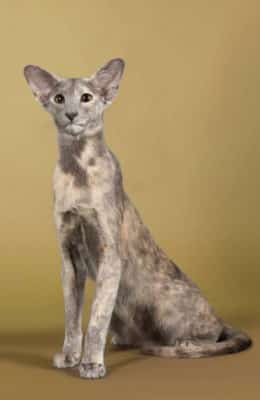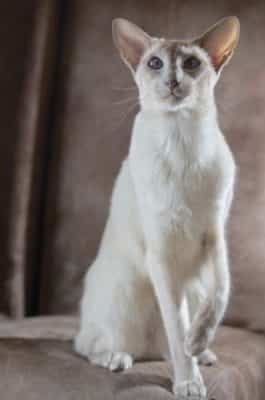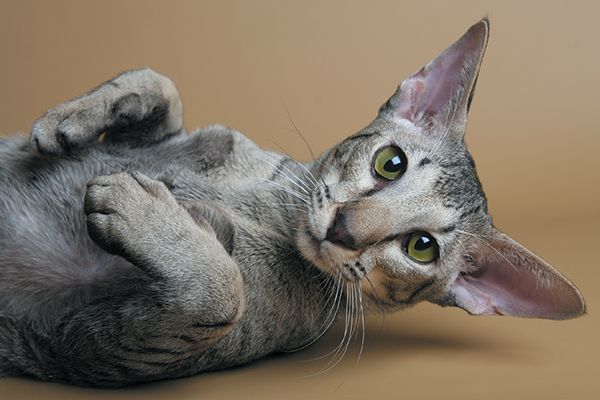Oriental Shorthair
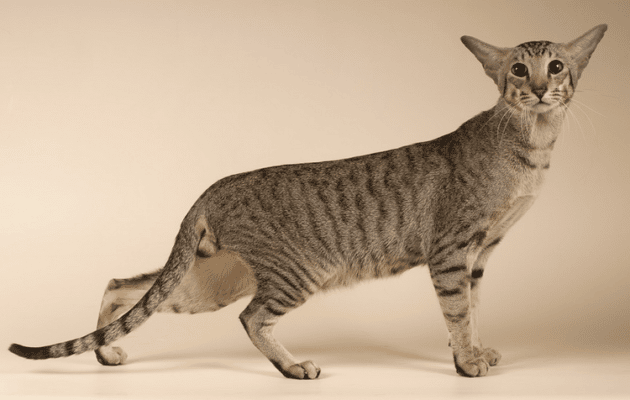
The character of the Oriental Shorthair cat can be as varied as its color. Representatives of this breed are always full of enthusiasm and energy. They are natural entertainers and are ready to amuse everyone around them with their presence. Orientals are very curious and are willing to do anything to participate in their owner’s life actively. The pet should not be left alone for a long time because it needs attention no less than a small child. Ignoring Oriental Shorthair cats makes them unhappy and depressed.
Table of Contents
Breed Information
| Origin | United States |
| Size | Males 23-25 cm Females 21-24 cm |
| Weight | Males 3.7-4.5 kg Females 2.3-3.2 kg |
| Fur Type | Short-haired |
| Color | Anyone |
| Lifestyle | Outdoors, indoors |
| Lifespan | 16-18 years |
| FIFe Classification | Category IV: “Oriental” Breed designation – OSH |
| WCF Classification | Group 4: “Siamese Oriental Shorthair” Breed designation – OKH |
| TICA Classification | OS |
| Group | Short-haired cats, popular cats, apartment cats (docile cats) |
| Price | $800-1500 |
Breed Photos
Origin History
The Oriental Shorthair cat is a breed that originated from the crossing of many other cat breeds. It is believed that after World War II, many breeds of domestic cats were in danger of extinction, among which were Siamese. To revive Siamese cats, breeders began to do various experiments and crossed them with Russian Blue, Abyssinian, and British Shorthair breeds. These and subsequent crosses resulted in Siamese kittens with sharp noses, which continued the breed.
Also, the intermediate results of these experiments were the emergence of unique and elegant color combinations, which became the basis of the Oriental Shorthair breed. Even though English breeders started all these experiments, the Oriental Shorthair breed was bred in the USA.
In 1972 the Cat Fanciers’ Association (CFA) recognized the Oriental Shorthair as a separate breed, and in 1977 the breed was granted full champion status. Since then, the popularity of the Oriental Shorthair has grown rapidly, and it has become one of the most popular shorthair breeds.
In the late 1970s, the Oriental Longhair cat was also bred due to crossbreeding the Oriental Shorthair with the Balinese. In 1995 the Oriental Shorthair and Oriental Longhair became one breed called Oriental.
Appearance
The Oriental Shorthair is a slender cat with exquisite facial features. Its coloring can have all the colors of the rainbow. There is an opinion that there are up to 300 possible color combinations that can adorn the coat of this breed of cat. It was the color of the coat that was the key driver for the recognition of this oriental cat as a separate breed. The name of the breed already says that the hair of its representatives is short. The structure of the coat is fine, smooth – resembling gloss or satin.
Cats of this breed have thin bones and fairly strong muscles. Hips are usually no wider than shoulders. The limbs are slender, with the hind legs slightly higher than the front. The pet’s small, graceful paws are oval. The neck is long and slender; the head resembles a tapering wedge, well proportioned to the body. The Oriental Shorthair cat has large, pointed, and wide ears. Its medium-sized eyes are almond-shaped. The gaze of this cat is unusual and hypnotizing.
Character
The character of the Oriental Shorthair cat can be as varied as its color. Representatives of this breed are always full of enthusiasm and energy. They are natural entertainers and are ready to amuse everyone around them with their presence. Orientals are very curious and are willing to do anything to participate in their owner’s life actively. The pet should not be left alone for a long time because it needs attention no less than a small child. Ignoring Oriental Shorthair cats makes them unhappy and depressed.
Oriental Shorthair cats are very sociable and affectionate; they love to meet new people. These pets are loyal and faithful to their owners. If it so happens that the cat has to live in another family, it will be difficult for the new owner to earn his trust and love. It should be noted that the Oriental Shorthair breed has good “vocal data. Representatives of this breed often express excitement, interest, despair, or other emotions with a loud, and sometimes very annoying, meow.
Care
The Oriental Shorthair cat is unpretentious in care. Its short hair does not require special care; most of the time, the cat manages it perfectly well by itself. Sometimes you can brush the cat to remove the dead hair and stimulate the growth of new ones. To prevent the pet from spoiling the furniture, you need to buy him a scratching post right away. In general, this breed’s cats are very clean, so you need to change the litter box litter in time and thoroughly clean bowls. Sometimes the pet may refuse to eat if the dishes, in his opinion, are not clean enough.
Education
Oriental Shorthair cats lend themselves well to education and training. It is not difficult to train a kitten to the sleeping place, litter box, scratching post, and feeding bowl. These cats can also be taught simple commands and tricks. The main thing is to turn training into a game and not force the cat to do something if he is not in the mood for it.
Common Diseases
The Oriental Shorthair cat, whose genetic history is related to Siamese Shorthairs, is prone to the same health problems. In general, however, the breed is considered quite healthy. Some of the most likely diseases in this breed include bladder stones, cardiomyopathy, liver amyloidosis, and strabismus.
In addition to standard hygiene procedures, which include regular cleaning of the ears and eyes, it is important to pay attention to the cat’s mouth’s hygiene since Orientals are prone to gingivitis. To avoid this problem, it is enough to brush the cat’s teeth once a week.
Nutrition
To keep an Oriental Shorthair cat healthy, you need to provide a balanced diet. The basis of nutrition can be dry food or canned food. In both cases, the food must be of high quality. There is an opinion that cats like canned food better, but that does not mean that they will give up dry food. A great option is to combine the two types of food.
Sometimes the pet can be pampered with natural products – a piece of fish fillet or lean meat, oatmeal with milk. At the same time, you should not do it too often because the cat might get used to the treats and will increasingly refuse the usual food. It is important to make sure that the cat does not overeat because this can harm its flexible slender body.
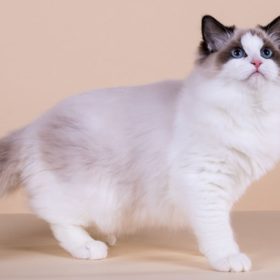 Ragdoll
Ragdoll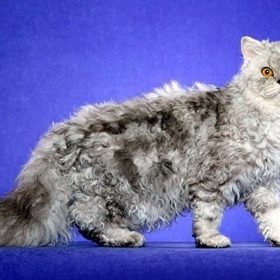 Selkirk Rex Longhair
Selkirk Rex Longhair Thai
Thai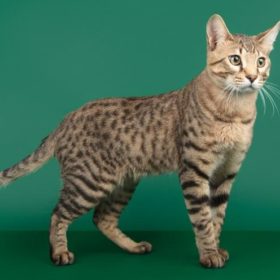 Serengeti
Serengeti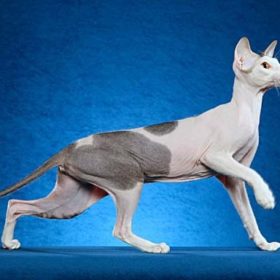 Peterbald
Peterbald Ural Rex Longhair
Ural Rex Longhair